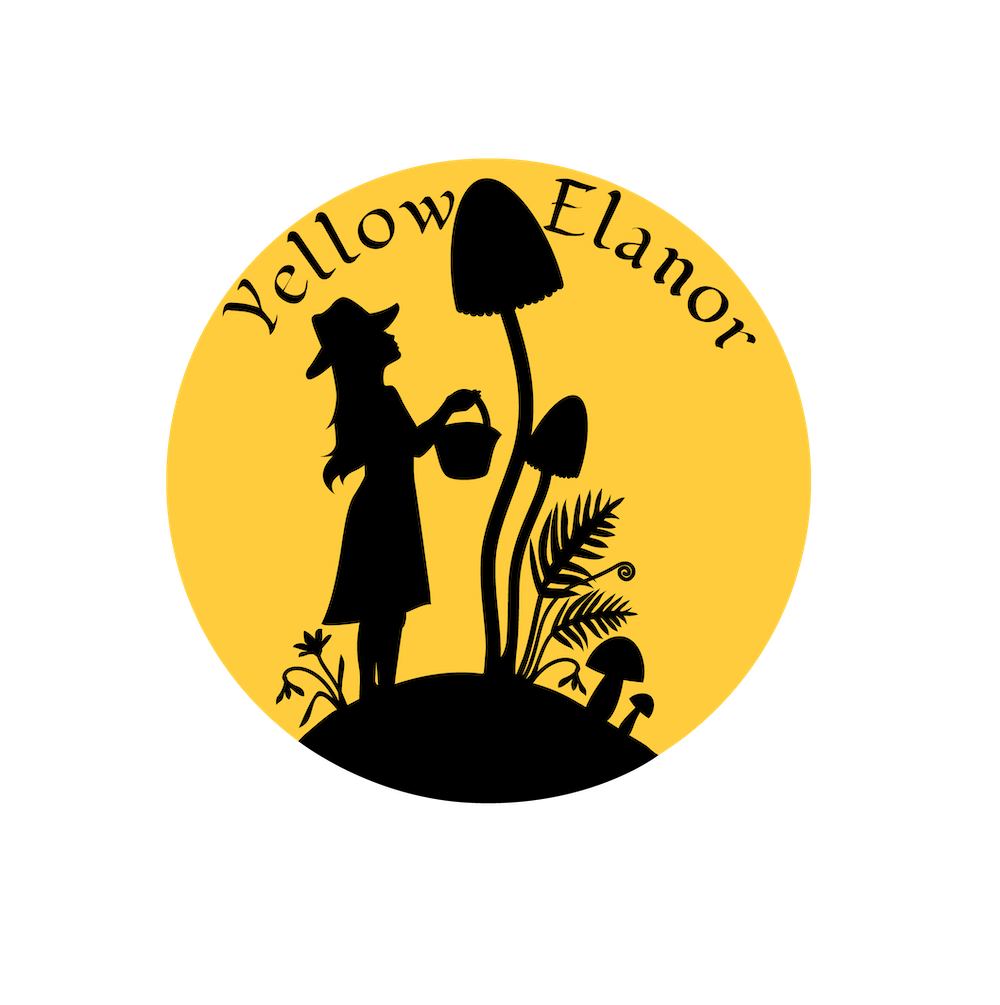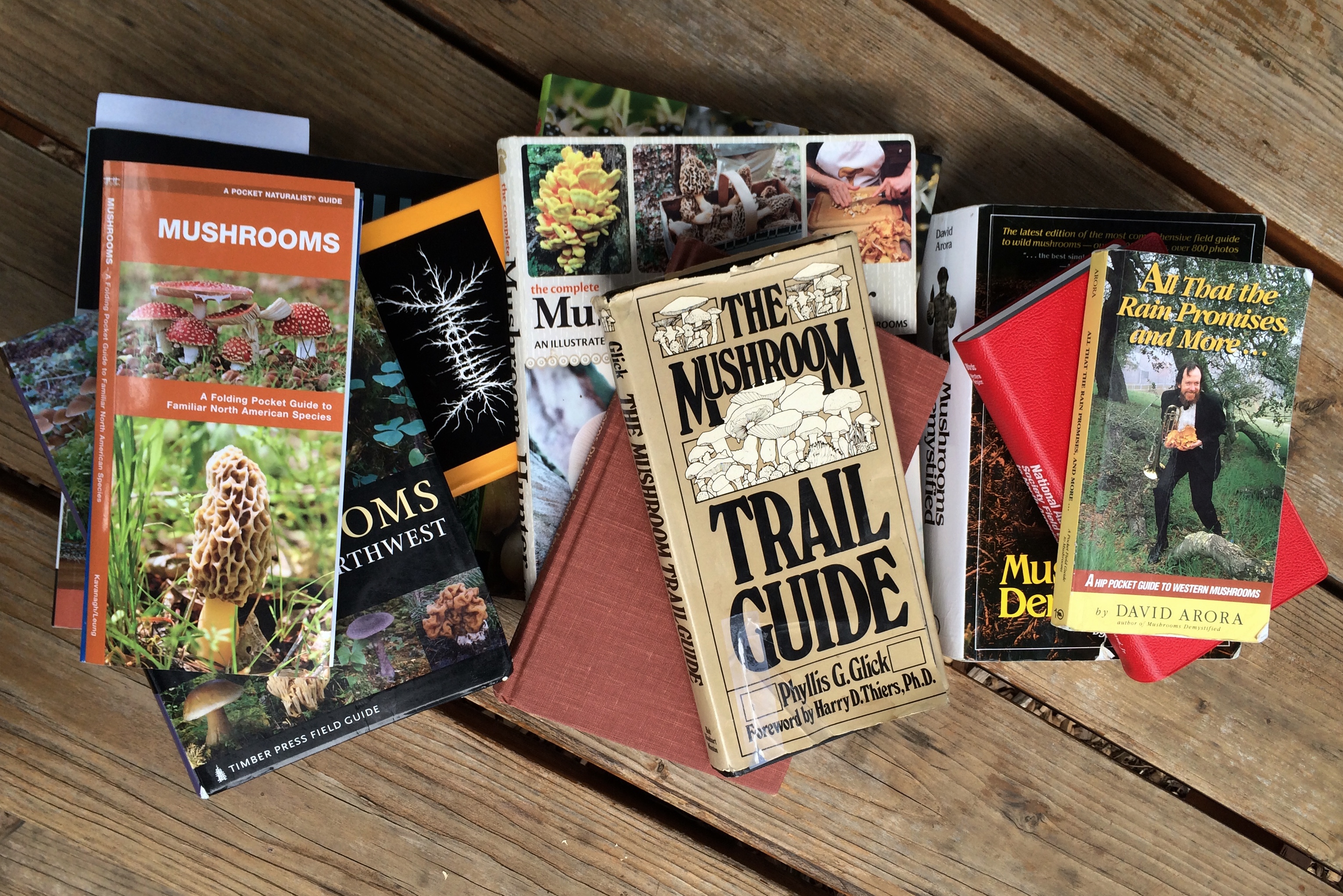The fun challenge of identifying mushrooms can quickly turn into an aggravating challenge if you don’t have a proper field guide. I’d love to share a few tips on how to make sure you’re prepared to purchase your first field guide (or second, or third…or…lets face it, if you get into this mushroom hunting thing, you’ll eventually own a whole shelf of them!)
First, what kind of mushroom identification will you be doing?
Are you the ‘I need to know the ID of each and every mushroom I come across’ kind of person? Or more of a ‘I want to know what I can eat-and what I can’t-nothing more’ type of person. Perhaps you’re somewhere in-between?
If you fall under the category of simply wanting to know how to forage for edibles and aren’t as interested in the nitty gritty details of every little brown mushroom you come across, then a more simplified book will suite you well. A book that covers specific edibles plus their inedible/poisonous look-a-likes, no need to buy a thick book with hundreds upon hundreds of species to sort through.
My suggested book: The Complete Mushroom Hunter: An Illustrated Guide to Finding, Harvesting, 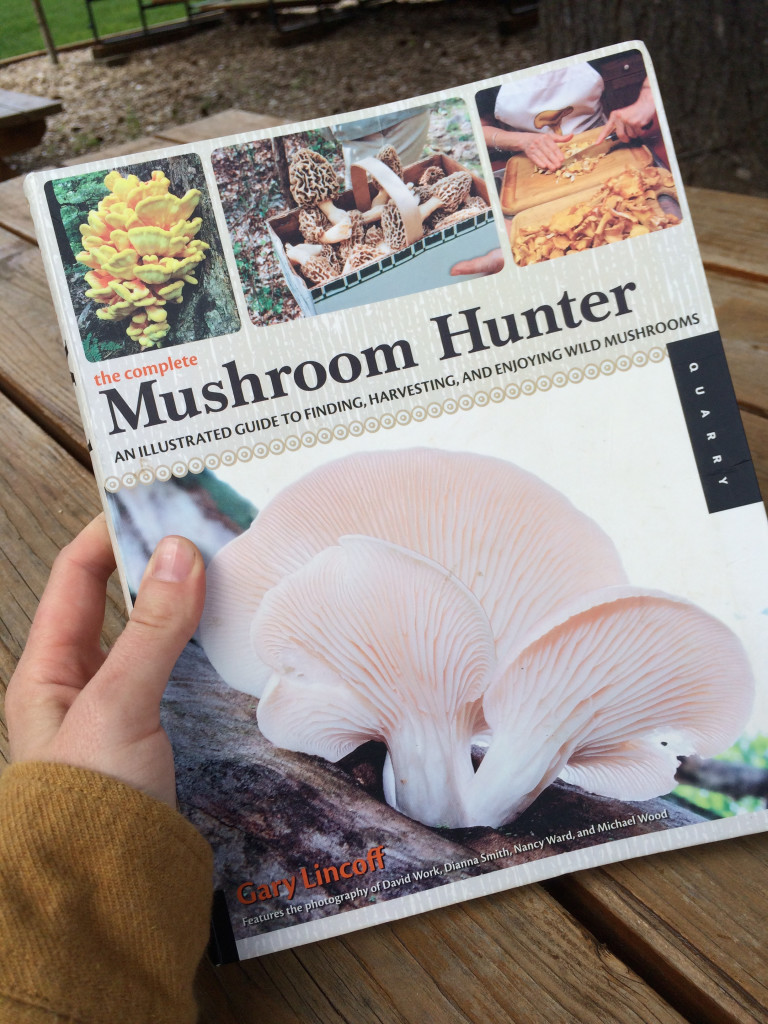 and Enjoying While Mushrooms. By Gary Lincoff.
and Enjoying While Mushrooms. By Gary Lincoff.
This is by far the most organized and all encompassing book on foraging edible mushrooms I have come across. It is universal to the world of mushroom foraging, having multiple charts laying out which mushrooms grow in which regions of the world and at what times of the year to look for them. A list of ‘how to’s’ and ‘what to bring’ begins the book, followed by identifying edibles, poisonous and medicinal mushrooms. It ends by laying out what to do after you have harvested your mushrooms, recipes included. I especially love the “Rules to Follow for Eating Wild Mushrooms Safely” page, it covers all your bases.
If you are interested in the top 20 or so edible mushrooms and how to identify, forage and eat them, this is the book for you.
If you’re more interested in a large comprehensive book of all kinds of mushroom species, then lets take a look at how to find you the right one.
Three things to help you pin point your first field guide:
- Find a field guide with a key-and use it:
A key is a list of questions about a mushroom’s features that eventually lead you to the identify of your mushroom. In my experience, this is the most accurate way to identify. Flipping through photos in a book will only get you so far (plus, you should never, ever identify based off a photo only, written descriptions of features are an absolute must). Reading the questions in a key will not only help you identify your mushroom more accurately, but also give you an idea of which features you should be paying attention to while out in the field “Does your mushroom smell strongly of garlic”…hmm? Well does it? Did you sniff it? A field guide without a key won’t be detailed enough to satisfy your curious mind when identifying
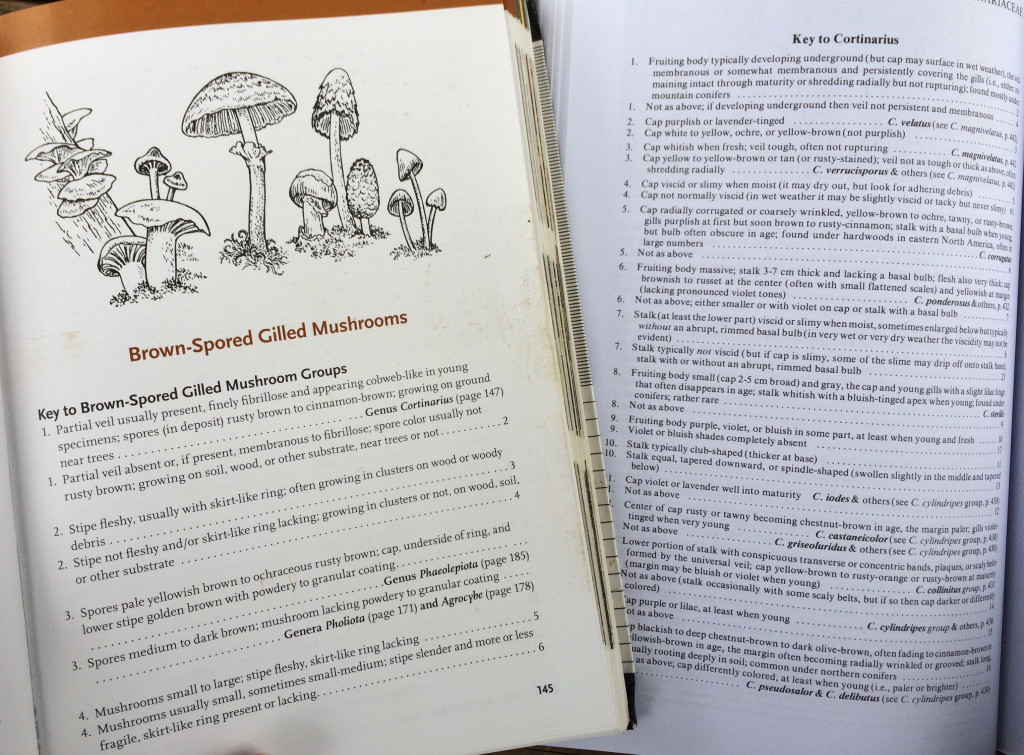
A more simplified key on the left, and a more complex one on the right.
2. Find a recently published guide:
I’ll admit, I’m a sucker for those cool old 70’s mushroom field guides with the hand drawn illustrations, but those won’t do for identification anymore. Why? Have the mushrooms change since the 70’s? Nope, but our knowledge of them sure has. The science of mycology (the study of fungi) is a fairly ‘young science’, the majority of fungi haven’t even been identified yet so there is a fluid shift as mushrooms are re-named and re-organized. Finding a mushroom field guide with more current information will help as you move forward. Some of my favorite field guides are now outdated, because of this I often have to go to other sources to confirm a name or mushroom relationship-I see a few purchases of new field guides in my near future.
3. Keep it local:
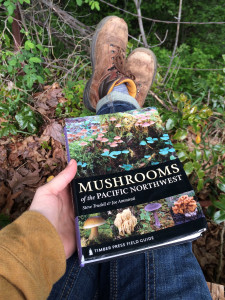 There are dozens of amazing guides out there that encompass large geographical areas. The larger the area covered in the book, the more mushrooms you will have to sort through…and the less likely it will have area specific fungi. For example, if I purchased a North American Mushrooms field guide, it will have some of the mushrooms in my area, but also mushrooms that grow thousands of miles from here, for a beginner, this will easily overwhelm. Finding a field guide for your specific region will eliminate unnecessary sorting of non local mushrooms, plus it will help ID mushrooms that may be unique to your area that a more expansive field guide wouldn’t have. The field guide “Mushrooms of the Pacific Northwest” is my go-to guide, if you can find one similarly local to your area, you will find mushroom identification becomes much easier!
There are dozens of amazing guides out there that encompass large geographical areas. The larger the area covered in the book, the more mushrooms you will have to sort through…and the less likely it will have area specific fungi. For example, if I purchased a North American Mushrooms field guide, it will have some of the mushrooms in my area, but also mushrooms that grow thousands of miles from here, for a beginner, this will easily overwhelm. Finding a field guide for your specific region will eliminate unnecessary sorting of non local mushrooms, plus it will help ID mushrooms that may be unique to your area that a more expansive field guide wouldn’t have. The field guide “Mushrooms of the Pacific Northwest” is my go-to guide, if you can find one similarly local to your area, you will find mushroom identification becomes much easier!
If you have a favorite field guide, leave a comment letting me know what it is and also what area you live in-I’d love to start a list of suggested field guides for all different regions!
